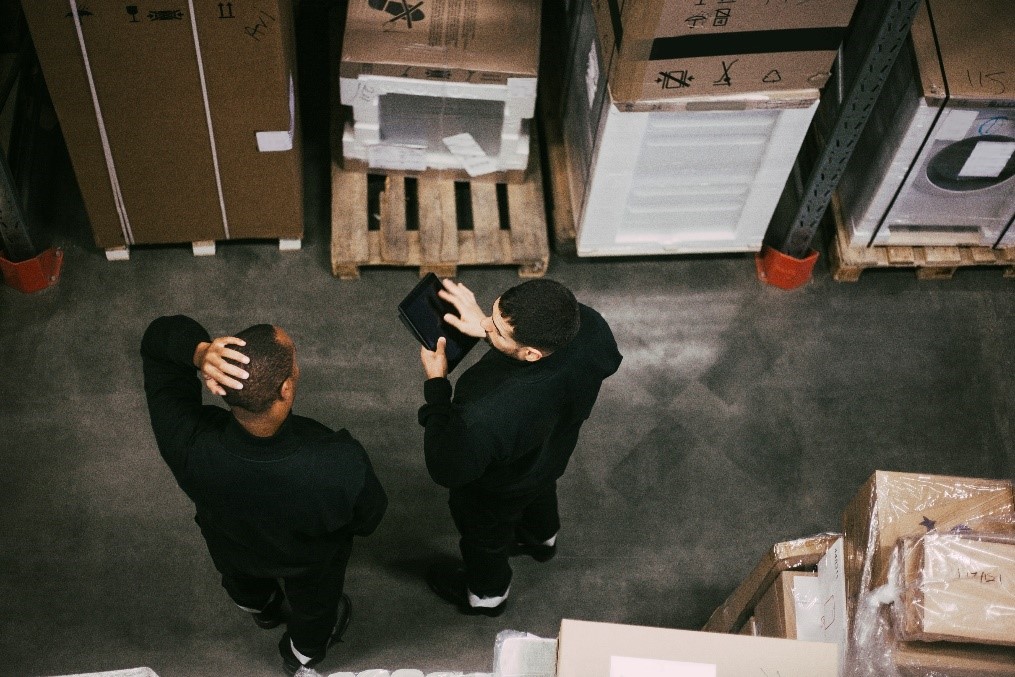- Article

- Balancing Supply & Demand
- Managing Supply Chain
Capital Thinking: Global supply chains
Business resilience and flexibility are key to coping with the unexpected, but how much do you value sustainability metrics such as diversity and carbon footprint in your supply chain?
Even before the pandemic, corporate bosses worried that their organisations were too siloed and bogged down in structural complexity. While COVID-19 exacerbated supply chain challenges, the effects of climate change and natural disasters such as hurricanes and flooding had already highlighted the need for change to tackle widespread disruption.
A seismic shift in supply chain thinking
The evolution of supply chains can be seen in the shift from traditional models to agile digital systems that better prepare businesses for the unexpected.
Traditional supply chains are linear: design, materials, manufacturing, sales, marketing, orders, logistics. The legwork involved in coordinating suppliers, agents, service providers and customers is mind-boggling, with each step dependent on the one before.
But digital supply chains share data and visibility across every link – crucially, in real time. Labour-intensive information gathering, such as analysing sales forecasts, availability of materials, and supplier performance, can be seen as events are unfolding. This transparency of data can enable a better understanding of inventories and helps build closer relationships across the chain, while allowing fo rapid decision-making when corrective action is required.
It can also have a significant effect on improving and measuring the sustainability of a supply chain, from its carbon footprint to its social impact.
Global supply chains’ crucial role in carbon emissions reduction
The 2021 UN International Panel for Climate Change Report (IPCC) is unequivocal: halve global greenhouse gas emissions by 2030 and achieve net zero carbon emissions before 2050 to limit global warming to 1.5ºC above pre-industrial levels. This is considered the upper limit beyond which we cannot survive. And yet even with the reductions during lockdowns (the most since World War II), the world will miss its annual targets. Incredible, given that if everything fails around us, we fail too!
According to analysis by Boston Consulting Group (BCG), global supply chains account for 80% of the planet’s carbon emissions. Of these, more than 90% of the firms in any supply chain are SMEs, some so small that they’re under the radar. This is unsurprising when we consider that corporates frequently have contracts only with immediate Tier 1 suppliers, yet the layers beyond Tier 1 also have their suppliers, who have their own suppliers, and so on down the line. Consequently, the environmental impact of a complex supply chain can be several layers deep. Plainly, the only way to reach the IPCC’s target is by embedding sustainability into every link of the chain. This goes beyond greenhouse gas emissions to water scarcity, biodiversity and greater use of renewable energy and low-emission materials.
A snapshot of the US auto industry from Tor Hough, boss of US data analysts Elm Analytics, provides an astonishing illustration. There are 140 branded manufacturers; 5,000 Tier 1 suppliers; 25,000 Tier 2 suppliers; and more than 200,000 other suppliers. Imagine if they were to pull together to curb emissions!
The power of partnerships
Left alone to implement sustainability measures, smaller suppliers are unlikely to comply due to the set up costs and a lack of expertise. But collaborative efforts often achieve what individuals on their own cannot. The World Economic Forum recommends forming industry partnerships to address complex problems: “Topics such as deforestation, effluent in waterways, or buying minerals from the Congo can only be addressed by a consortium in which each party… rises above self-interest and thinks about the wellbeing of the collective.”
However, a ‘coercive’ approach to collaboration is unhelpful. Smaller firms may lack the know-how, and many are struggling to keep the lights on in the wake of COVID-19: in a recent HSBC survey, 87% of 7,312 decision-makers in 14 markets said they expected the pandemic to have a lasting impact on their businesses. Moreover, they may have no access to suppliers with lower carbon footprints.
But business leaders do recognise that what’s good for the pocket is good for the planet: 81% of those surveyed see the financial benefit of improving their sustainability efforts – they expect an increase in revenue from investing in sustainability.
People, principles, practices
Making supply chains more sustainable is not only about reducing their carbon footprint. It also means making sure they commit to corporate social responsibility. Given the disproportionate number of workers lacking adequate healthcare and paid sick leave, the timing of the recent calls for justice, equity, diversity and inclusion that reverberated around the world during the pandemic was sadly apposite.
The crisis served to emphasise the inequality in the global workforce. And since people are crucial to every single link in the supply chain, it is essential that companies recognise the value of their workforce. Particularly as the sustainability benefits of good employment practices to communities are legion: improved living standards, skills training, knowledge development (including managing the environment), innovation, healthy competition among suppliers, and risk mitigation.
Hire workers who think outside the box
Diversity and diverse thinking bring other advantages, too. The evolution of Netflix illustrates this point: having started as a store-based DVD rental business, it then shifted to a subscription-based DVD-by-mail service in 1999, and a decade later morphed into a streaming service. Which meant that by the time COVID-19 swept the world they were ready, pulling in 16 million new accounts between February–March 2020.
It’s a brilliant example of not being tied to a set way of doing things, of being able to rethink how you approach your operations. “The most important thing we’ve learned,” says Vernā Myers, VP of Inclusion Strategy, “is that when we pair culture with diversity and inclusion, it unlocks our ability to innovate, to be creative, to solve problems. It breaks up groupthink. It brings different lived experiences and perspectives to a problem, so that we’re no longer solving them in old ways. And we can better entertain our current and future members.”
Organisations that are open to diverse views, and recruit people who think, look and feel differently, benefit from different voices at the table. A heterogeneous workforce keeps bosses on their toes, ensures businesses don’t get stuck in a rut, and prepares them for future challenges. No more so than how they can make their supply chains more agile, more sustainable, and ultimately more profitable.
7 ways supply chains can become net zero
1. Rethink product design –
Don’t tinker at the edges of a product’s carbon footprint – re-evaluate how it’s made and how it’s used, then start again. Make products that last.
2. Embrace collaboration –
Small suppliers and big corporates need to work together. Share knowledge, tech, investment, and resources across the sector, not just within supply chains.
3. Build capabilities –
Accelerate the shift to net zero with capability development and training. A good example is BMW’s emissions-reduction workshops for Tier 1 and 2 suppliers.
4. Invest in tech –
Speed up ‘climate tech’ R&D in alternative fuels, low-energy manufacture, carbon capture methodology, and bring useful technology to market swiftly.
5. Develop better data structures –
Gathering data (e.g., water usage, carbon emissions, labour conditions) across the supply chain in real-time is the key to accurate measurement.
6. Think about policy and standards holistically –
Set a high but workable common standard, rather than continuously changing policies, standards and practices – it’s complex and costly.
7. Enable financing –
Small suppliers often can’t finance net zero strategies. Set up investment partnerships with banks to help deliver financing and use data structures to provide transparency on where funding is being directed.



